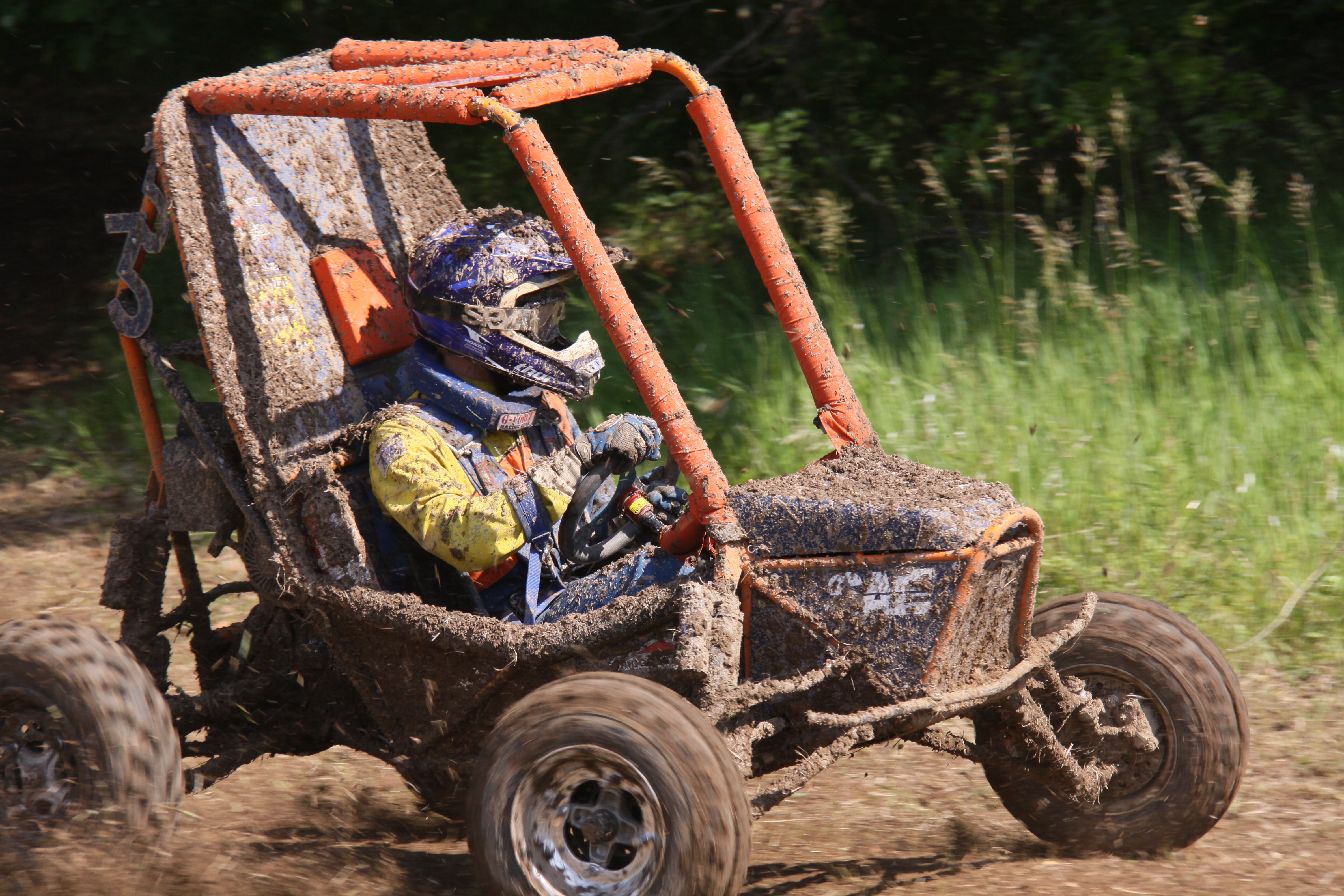It is serendipitous when your passion, studies and extracurricular interests converge and ultimately lead to your dream job. And that’s exactly what happened with University of Virginia graduate Neil Salmons, who earned a degree in mechanical and aerospace engineering in 2009 and is now an underbody design engineer at Honda R&D Americas Inc.
Salmons front-loaded intensive engineering courses early in his undergraduate career, a move that allowed him to make room in his schedule for what would become a defining part of his college experience: Virginia Baja Racing, a student-run group in which students collaborate to design, build and race an open-wheel, off-road race car inspired by the Class 1 Buggies that compete in the Baja 1000. For Salmons, this was the culmination of a childhood dream.
“I knew I wanted one way or another to get into the automotive industry since I was 12 years old. I’ve always loved cars,” Salmons said, adding that it was a passion passed on to him by his father. “He likes cars, but I’ve got the bug even more than he does. I love driving them fast, and racing them, and being able to design and build them. And racing what you build is pretty special.
“I joined the Baja team my second year,” he said. “We went to competition, but I wasn’t that involved with the team at that point, so for me, going to the competition was all about racing a completed car.”
And that inspired Salmons to want to start at the beginning.
“My third year, I was much more involved. I did frame design, and it was quite a learning experience.”
And Baja became all-consuming.
“This was the primary activity for me at U.Va.,” Salmons said. “Classes were almost secondary. They were very important – there’s no doubt about that – but I’d go to class, get my work done, then concentrate on Baja.”
He said that while classes taught him important fundamentals and concepts, the Baja team allowed him to apply that learning in a hands-on way.
“You design the whole thing in 3-D, make everything fit and comply with all the rules, and then you get to actually build the thing.”
Salmons said students in the Baja club start designing their buggy in August, and set design deadlines for winter break. Most of the club members return early from break to begin building, bending tubes, making jigs and starting to weld things together.
“Our car was built by early spring, which gave us a little test time and shakedown time before competition,” he said. The students race the car up to three times at the end of the school year in heated competitions with about 100 teams from around the world.
Salmons headed up the group during his fourth year at U.Va., as the club was gaining in popularity.
“By the time I was president, we had quite a few people show up for the interest meetings, somewhere between 50 and 70 students,” he said. “It would drop off once people understood how much work was involved. It takes a certain kind of person to dedicate so much of their time to designing, building and racing a car.”
He said his favorite part of working on the Baja team was the first time the car drove on its own power out of the shop at Milton Field, located a few miles from Grounds.
“It always happened at around 6 or 7 a.m., after we’d been up the entire night trying to get the car to run, usually just a matter of days before the competition,” Salmons recalled. “It’s a mixture of relief and joy and excitement, but it’s tempered because there’s so much more to do. Not all the body panels are on, the power train is a bit glitchy – so it was a reminder of how much work you still had left. But it’s so gratifying to experience something you built from the time it was an empty jig table to the day that it was a fully built car. It was special every time.”
Perhaps most importantly for Salmons, participating in Baja really drove home what a career in automotive engineering would involve.
“It was very different from class, which had its value: You have to understand your concepts and theory to make good decisions and design,” he said. “But doing Baja was so much more closely related to what I do on a daily basis now than any class work.”
And the experience opened important doors professionally.
“It was the single biggest reason I got hired,” Salmons said. “In my interview I spent two-thirds of the time talking about the experience of designing and building the Baja car – doing the frame my third year, the suspension my fourth year, running the team my fourth year, and all the compromises you have to make to make all the different parts fit, work together and comply with the rules. That’s basically what my job now entails.”
While the engineering part of his job at Honda is precisely what Salmons cut his teeth on with Baja, he still keeps his hand in racing.
“Through work we’ve got a rally team. It’s not so much design work, not designed from the ground up, but we design skid plates, guards and various countermeasures to things that go wrong while racing. It’s like an intramural sport that’s supported by our company, sort of an after-school activity.”
For Salmons, after-school activities might be more limited now with the recent birth of his first child, but no doubt he’ll be passing on his passion for cars, just as his father did with him.
Media Contact
Article Information
February 4, 2014
/content/thanks-uva-s-baja-racing-club-engineering-grad-living-his-dream

